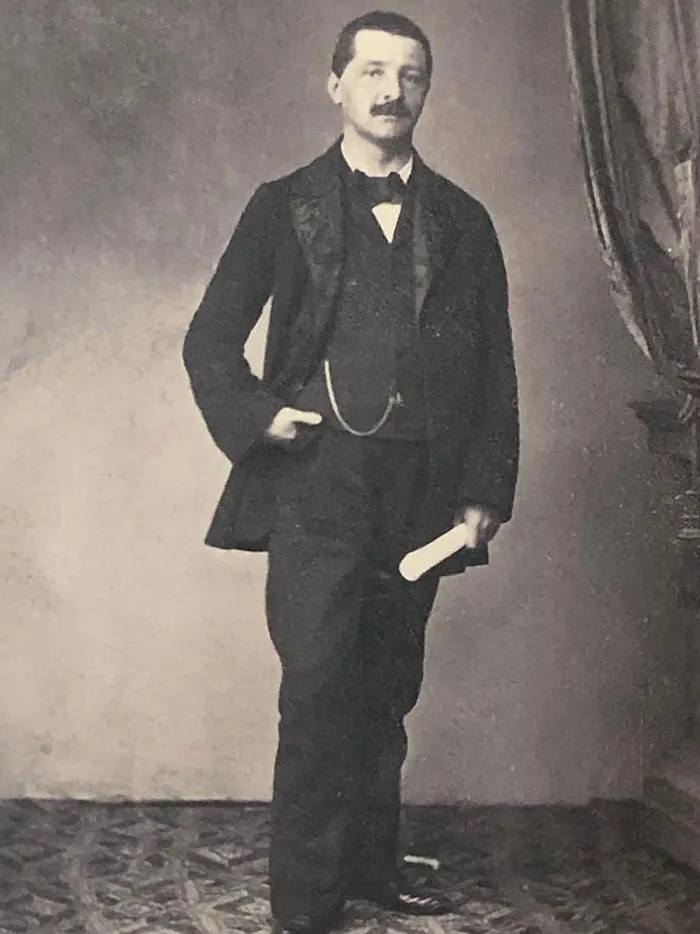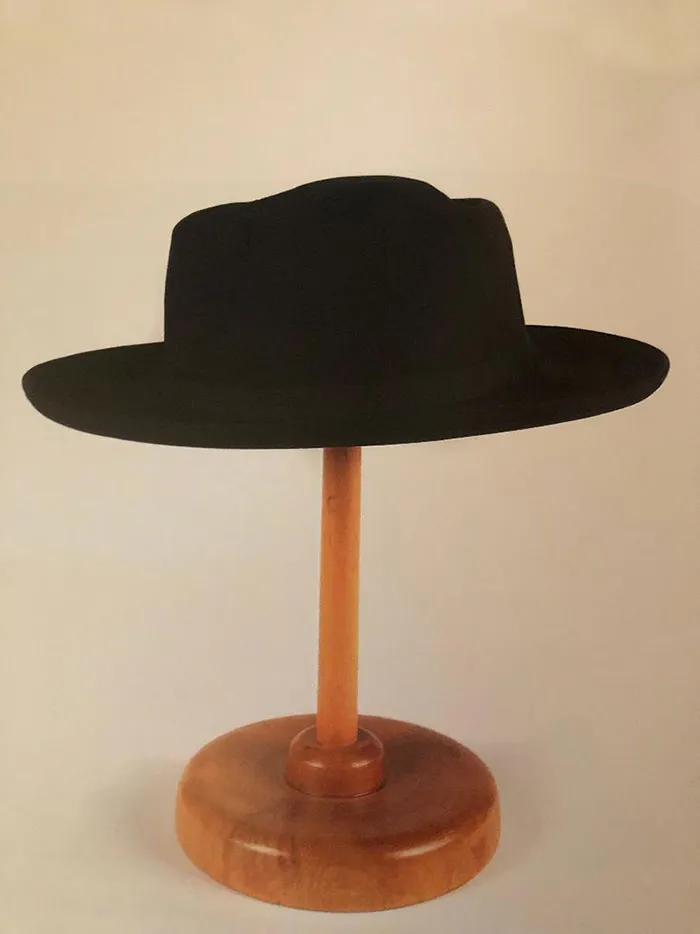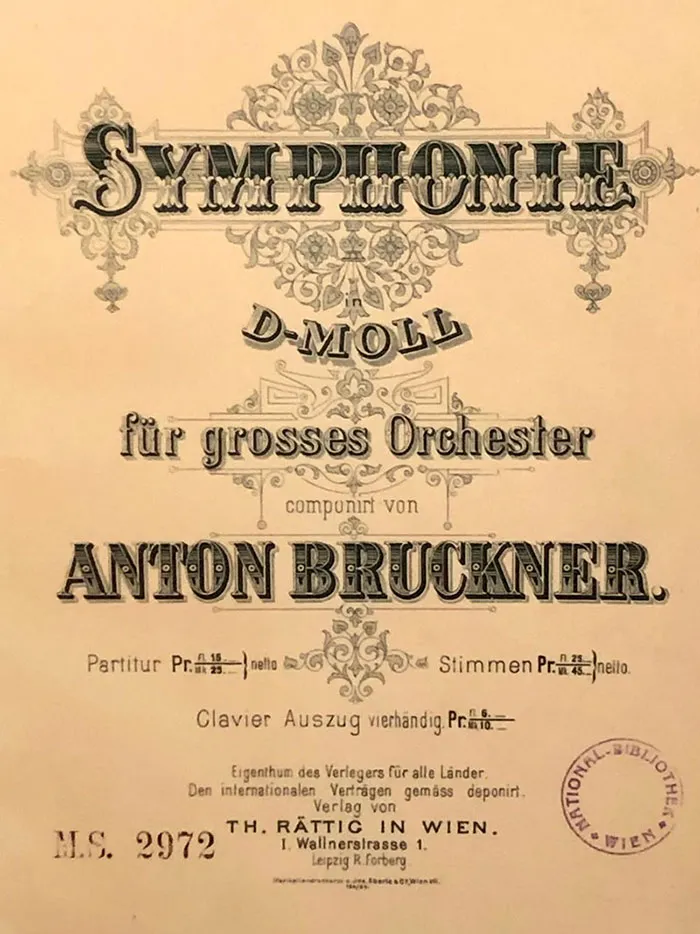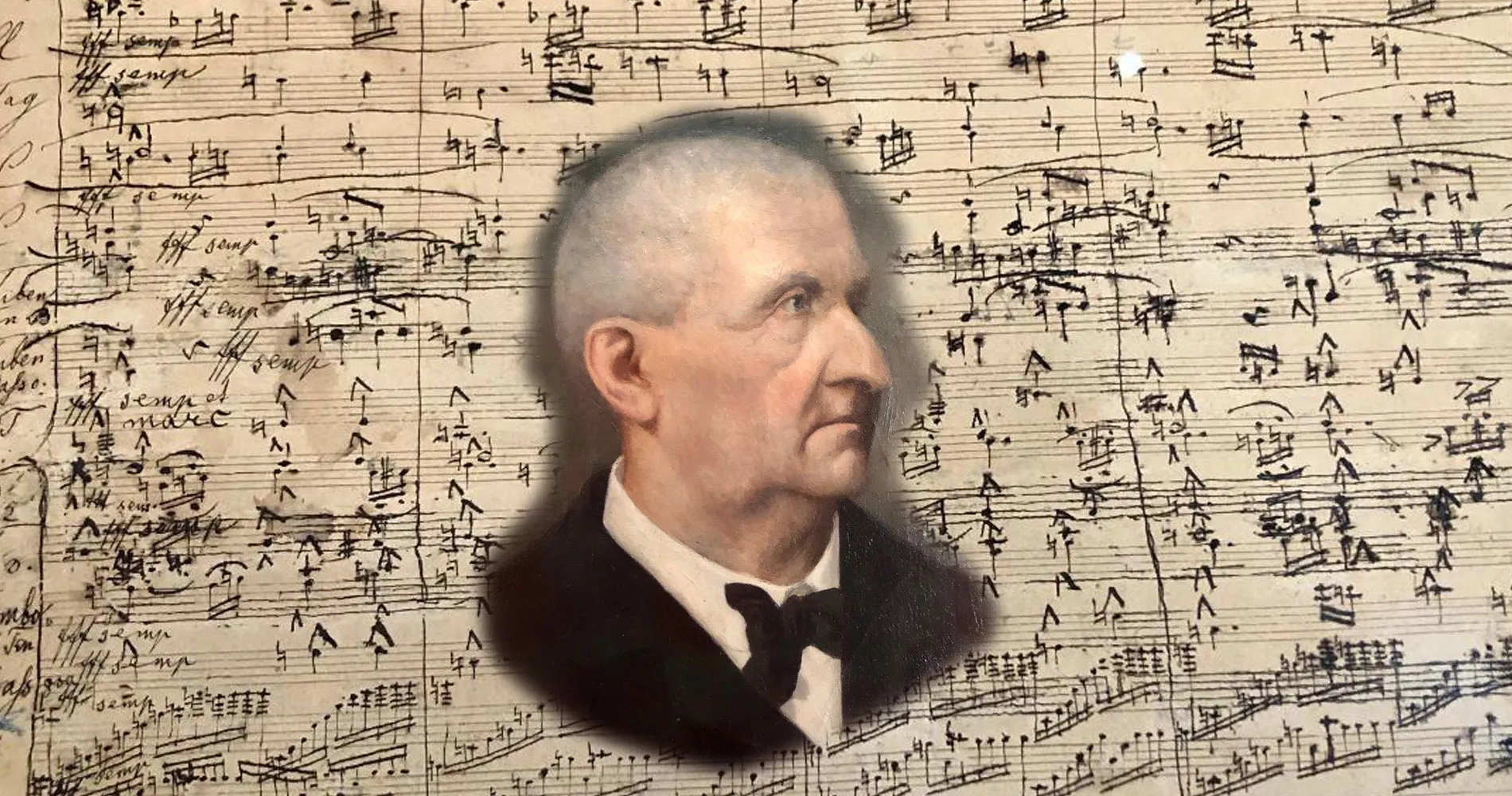To celebrate his 200th birthday, an impressive exhibition reveals the complex mind and life of one of Austrian’s most underrated composers. Showcased are 130 original documents and music manuscripts. At the exhibition’s heart are the nine original symphonies that underscore Bruckner’s revolutionary talent during the 19th century.
The Austrian composer (Josef) Anton Bruckner was born in the small town of Ansfelden in 1824. To commemorate the 200th anniversary of his birth, The Austrian National Library has dedicated a captivating exhibition in his name. It is entitled “Anton Bruckner: The Pious Revolutionary”. The exhibition superbly displays his life in the 19th century, exploring the revolutionary nature not only of Bruckner’s music, but of his mind as well. An interesting question remains: how can someone so unassuming compose such emotional and reactionary music?
Bruckner bequeathed his major musical scores to Austria’s court library (Hofbibliothek). The Austrian National Library later acquired them and holds the largest unique collection of Bruckner’s musical manuscripts today. In 2014, the Anton Bruckner Collection joined the “Memory of Austria”, the national UNESCO register of Austrian documentary heritage.
Bruckner, Symphony Nr 4 Es Dur ‘Romantische’ Claudio Abbado, Wiener Philharmoniker
Bruckner Symphony no. 8 1st Mov. Karajan
The exhibition displays many of these scripts, depicting Bruckner’s life. Visitors are invited to explore his musical career during his younger years as a choir boy and later, as a teacher and organist in Sankt Florian Monastery. For those who are not as familiar with Bruckner’s music, there are plenty of opportunities to privately listen to a selection of his pieces, such as string quartets and excerpts of his symphonies. Original diaries, personal letters and photographs, document his religious beliefs, his multiple professions as a teacher, lecturer and composer, his unrequited love interests, his fans, friends and supporters.
While Bruckner achieved considerable fame during his lifetime – he was awarded the Knight’s Cross of the Order of the Emperor Franz Joseph in 1886 – his oeuvre can better be judged in hindsight. He was considered to be a complex character: born in the countryside, considered by many to be provincial, wanting to lead a rural and simple life, and yet, he moved to Vienna in 1868, one of the most metropolitan cities in Europe and a global center for culture and art. However, he chose not to embrace its liberal lifestyle, nor was he interested in socializing or living the good life. Instead, he was devoutly religious, sensitive and humble, traveling back and forth between Vienna and Sankt Florian in search of nature and spirituality.
He loved sharing his passion. Bruckner enjoyed many a glass of wine with his students. Teaching was critical to him – from the primary school in St. Florian, to private pupils in Linz and in Vienna, at the Gesellschaft der Musikfreunde (Society of Friends of Music) and at the University of Vienna. Because Bruckner’s symphonies were costly to perform (his symphonies and choral works require large orchestras and event management), a group of dedicated Bruckner students transcribed some of his works for the piano, to enable a larger audience to enjoy his music.
 Anton Buckner
Anton Buckner
 Anton Bruckner’s signature hat
Anton Bruckner’s signature hat
 Anton Bruckner’s Symphony D Minor
Anton Bruckner’s Symphony D Minor
In his early years, he conscientiously studied music and harmony. Later in life, he taught himself how to compose. Bruckner only began composing his first piece, the Mass in D minor, in his late thirties. He was an ardent composer of church music (he wrote seven masses), but later also composed nine symphonies. Bruckner was described by a conductor as “half genius, half idiot”. He seemed to have had a “quirky personality.”
Bruckner was unlucky in love, suffering from depression and self-doubt, but was helped by his patrons and friends, such as Hugo Wolf and Theodor Helm. He was an ardent fan of Richard Wagner and was criticized in Vienna, after his music found admirers in German nationalist circles.
Bruckner’s Fourth Symphony, “The Romantic” was (and is) one of his most popular works. He finally achieved international fame after completing his Seventh Symphony in 1884. His Eighth Symphony is considered the most complex, experts have described the piece as being of “breathtaking magnificence”. The final movement of his Ninth Symphony remains unfinished, as Bruckner died before he could complete the last movement.
Why revolutionary? Bruckner was a revolutionary as he lived during the height of Austro-German Romanticism, yet he created such a new, original and complex sound that he paved the way for the more “modern” composers such as Arnold Schoenberg. The first versions of Bruckner’s symphonies often presented instrumental, contrapunctal and rhythmic complexities. This innovative sound – dramatic, monumental themes and harmonic boldness – was not well understood and was even considered unperformable by the musicians of his time. Instead, his critics favored the more conservative romantic music school embodied by Brahms, who also lived in Vienna.
Driven by perfection and often insecure, Bruckner felt compelled to rewrite passages of his works. His peers did the same, which resulted in contrasting versions and editions of most of his symphonies. However, Deryck Cooke, an English musicologist who became internationally known for completing Gustav Mahler’s unfinished 10th Symphony, writes that “Bruckner created a new and monumental type of symphonic organism, which abjured the tense, dynamic continuity of Beethoven, and the broad, fluid continuity of Wagner, to express something profoundly different from either composer, something elemental and metaphysical.”(The New Grove Dictionary of Music and Musicians, ed. Stanley Sadie, (London: Macmillan, 1980), 3:365).
Ultimately, Bruckner’s music was recognized for what it was: at times dissonant, progressive, courageous, and reactionary. The exhibition “Anton Bruckner: The Pious Revolutionary” pays homage to an outstanding talent.
“Anton Bruckner: The Pious Revolutionary” can be viewed at The National Austrian Library, Josefsplatz 1, Vienna until January 26th, 2025. It is located in the State Hall, which houses one of the world’s most gorgeous historical baroque libraries and is always worth a visit. Admission fee (for adults) is € 10.







